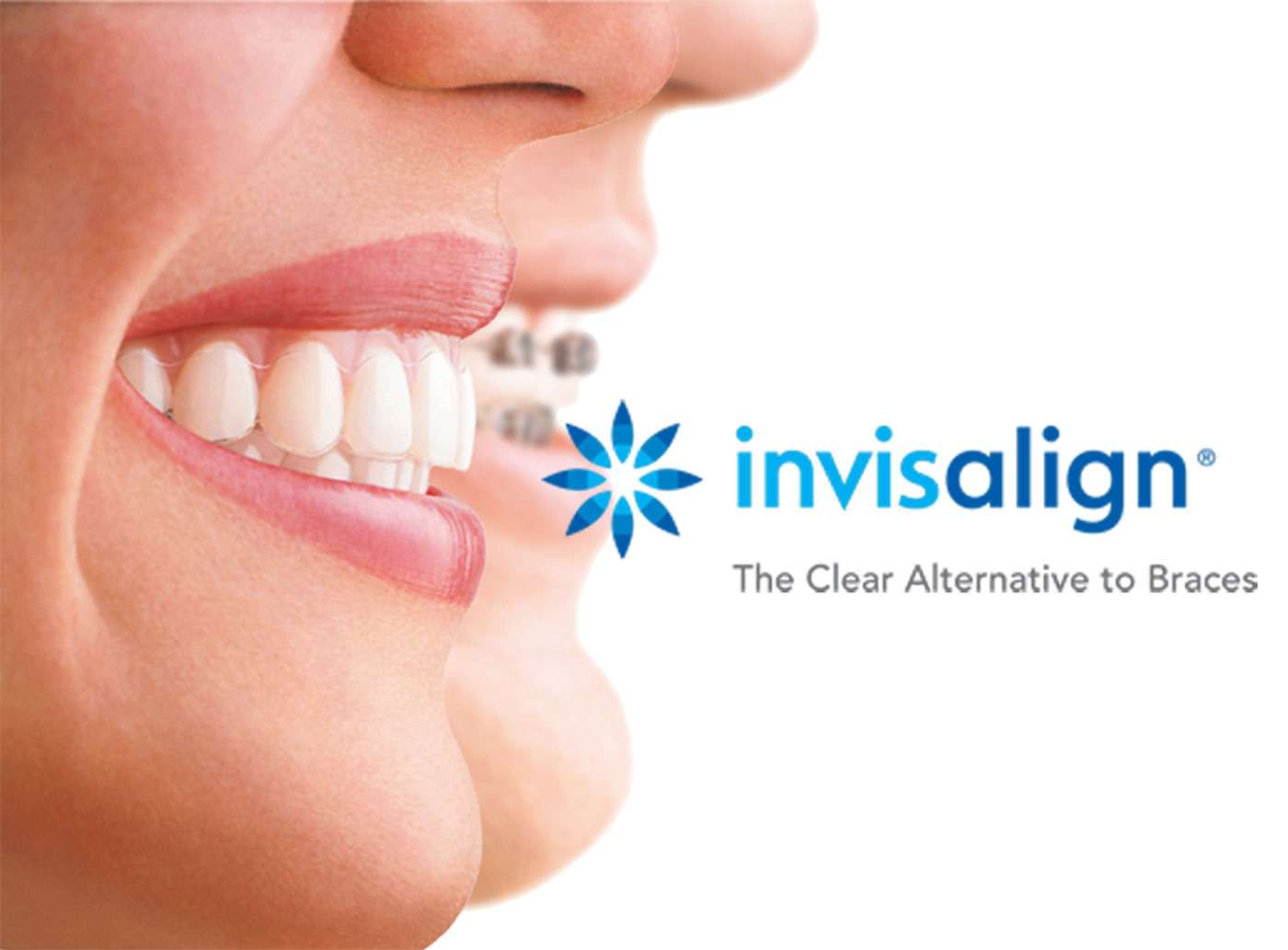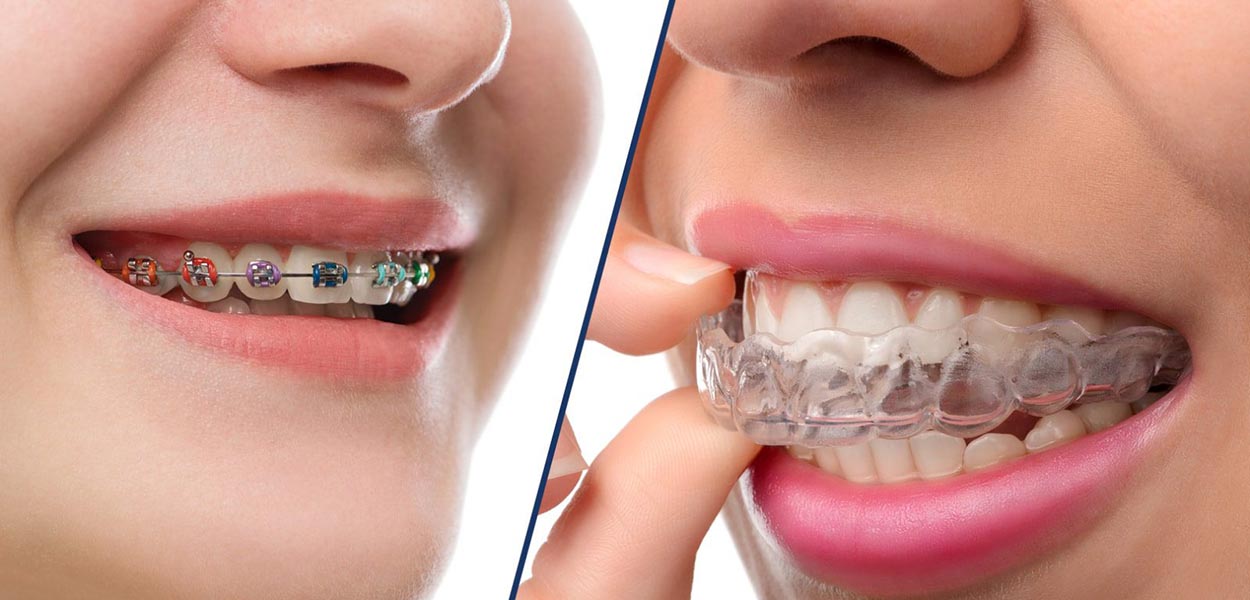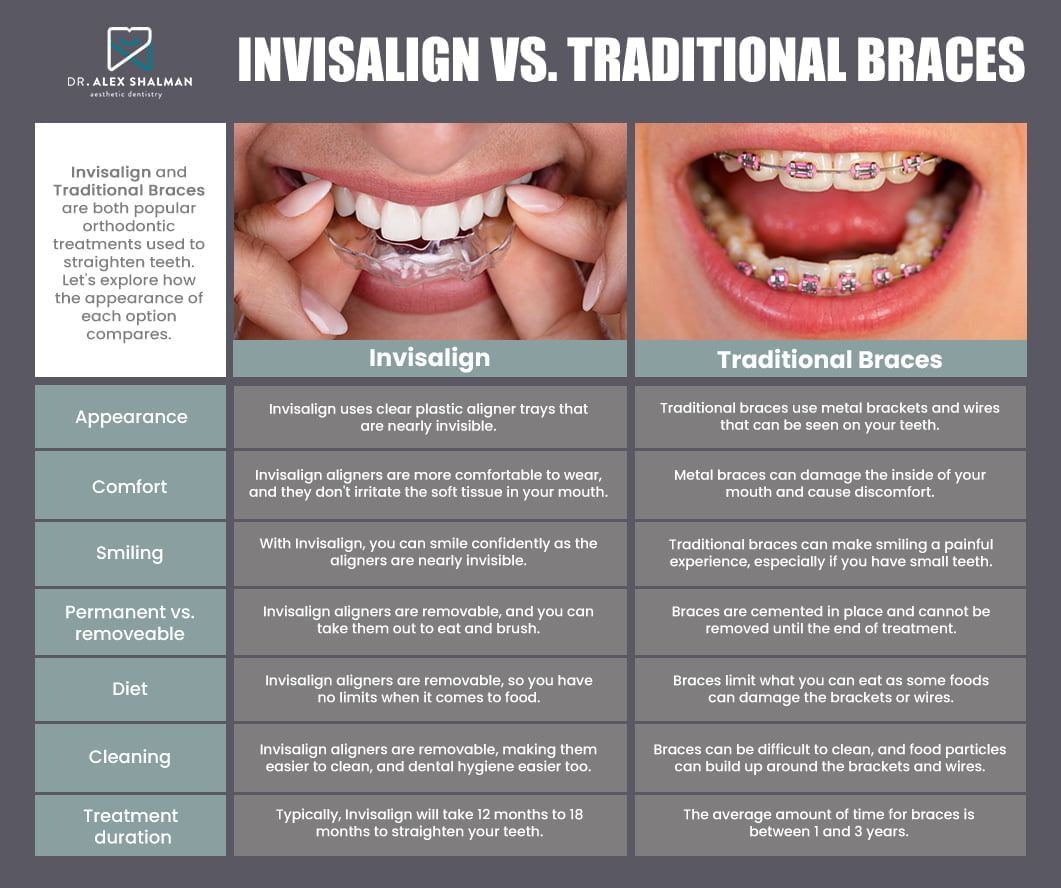Frequently Asked Questions Concerning Invisalign: Everything You Need to Know
Frequently Asked Questions Concerning Invisalign: Everything You Need to Know
Blog Article
Invisalign vs. Conventional Braces: Which Choice Is Right for You?
When thinking about orthodontic therapy, the choice between Invisalign and standard braces provides a number of important variables that warrant mindful assessment. Invisalign supplies a discreet choice with removable aligners, while conventional dental braces supply a more visible yet effective option for extreme misalignment. Each choice includes unique advantages and disadvantages associated with aesthetics, convenience, treatment duration, and cost. Understanding these subtleties is essential for making an informed decision that straightens with your personal choices and way of living. The concern continues to be: which alternative will ideal meet your orthodontic requirements and expectations?
Review of Treatment Choices

In contrast, traditional braces contain metal brackets and cords that are bound to the teeth. This technique applies constant pressure in time to attain alignment. While efficient for intricate orthodontic concerns, typical braces require routine sees for changes and can pose difficulties in maintaining oral hygiene due to the problem of cleaning up about wires and brackets.
Both options have their advantages, and the option usually rests on specific oral conditions, lifestyle preferences, and individual compliance. Eventually, consulting an orthodontic expert is critical for figuring out the most ideal therapy strategy tailored to private requirements. Comprehending the nuances of each choice can considerably influence the total success of orthodontic treatment.
Aesthetic Considerations
A considerable variable affecting the option between Invisalign and standard braces is the aesthetic charm each treatment uses. Invisalign aligners are crafted from clear plastic, making them essentially unnoticeable when used. This very discreet look is particularly appealing to teenagers and grownups who may feel uneasy about their orthodontic treatment. The capability to preserve a natural smile throughout the alignment process can dramatically enhance the person's self-confidence in professional and social setups.
In contrast, traditional dental braces contain steel brackets and wires, which can be a lot more visible. While developments in orthodontic modern technology have led to the advancement of smaller sized braces and colored elastics, standard dental braces still maintain an even more conspicuous account. For some individuals, the visibility of braces might hinder them from looking for required therapy.
Eventually, the choice in between Invisalign and standard braces might depend upon personal choices relating to aesthetic appeals. Individuals who focus on discretion usually favor Invisalign, while those who are much less worried about exposure might go with typical braces. Comprehending the visual implications of each option is vital for making an informed decision that lines up with one's way of life and choices.
Convenience and Convenience

In regards to ease, Invisalign aligners are detachable, allowing patients to appreciate their favored foods without limitation and maintain optimum dental hygiene. Brushing and flossing are streamlined, as the aligners can be gotten during these regimens, Home Page whereas standard braces call for cautious maneuvering around wires and braces.
In contrast, standard braces require normal Bonuses modifications, making them much less convenient for those with hectic timetables. In general, the convenience and convenience of Invisalign make it an attractive selection for many individuals looking for orthodontic therapy.
Treatment Period and Performance
While both Invisalign and conventional dental braces work in fixing oral imbalances, the duration of treatment can differ significantly between both alternatives. Generally, Invisalign therapy can take anywhere from 12 to 18 months, relying on the intricacy of the case. The clear aligners work by slowly changing teeth into their desired positions, and routine follow-ups with an orthodontist assistance make certain progress remains on the right track.
On the other hand, typical dental braces frequently need a longer dedication, normally varying from 18 months to 3 years. This results from their set nature and making use of brackets and wires, which can be much more efficient for extreme imbalances and intricate instances (Invisalign). The treatment effectiveness of traditional braces is well-documented, as they permit for specific changes and better control over tooth motion
Eventually, the option between Invisalign and conventional braces might depend upon both the expected therapy duration and the specific oral concerns handy. Consulting with an orthodontist is vital, as they can supply tailored recommendations based upon specific requirements, making sure the selected method aligns with wanted results and timeframes.
Expense Comparison and Insurance Policy Choices
Cost plays a significant duty in the decision-making process for people taking into consideration orthodontic treatment, whether choosing Invisalign or typical braces. Typically, the expense of Invisalign ranges from $3,000 to $8,000, while typical braces generally set you back between $2,000 and $6,000. Variables affecting these costs consist of the complexity of the instance, the duration of therapy, and geographical location.
Insurance policy coverage can dramatically affect out-of-pocket expenditures. Numerous oral insurance coverage strategies offer partial insurance coverage for orthodontic treatments, however the specifics can vary commonly. It is crucial for individuals to review their insurance coverage to identify the level of coverage for either choice. Usually, conventional dental braces might be much more regularly covered by insurance plans contrasted to Invisalign, which some insurance companies classify as a cosmetic procedure.
Furthermore, a number of orthodontic techniques offer flexible payment plans, making both therapy choices extra accessible. Clients must ask about possible funding alternatives and discounts for upfront settlements. Reviewing the overall price, consisting of insurance coverage advantages and repayment plans, is necessary for making an educated choice that straightens with both visual preferences and budget plan considerations.

Final Thought
In summary, the option between Invisalign and conventional see braces hinges on multiple variables, consisting of visual choices, comfort, treatment duration, and price. Invisalign supplies a very discreet, detachable choice that helps with oral health and nutritional versatility, while conventional dental braces may be preferable for complex oral problems and typically come at a reduced cost point. Ultimately, appointment with an orthodontist is necessary to examine private circumstances and establish one of the most suitable therapy choice for achieving optimum oral alignment.
When taking into consideration orthodontic treatment, the choice in between Invisalign and conventional dental braces provides several crucial elements that warrant careful analysis.Comparing Invisalign and traditional dental braces reveals unique treatment choices for orthodontic correction.While both Invisalign and standard braces are efficient in correcting oral misalignments, the duration of therapy can vary dramatically between the two alternatives.Cost plays a substantial role in the decision-making procedure for people considering orthodontic therapy, whether opting for Invisalign or conventional dental braces.In recap, the choice in between Invisalign and typical braces pivots on numerous elements, consisting of visual preferences, comfort, treatment period, and cost.
Report this page